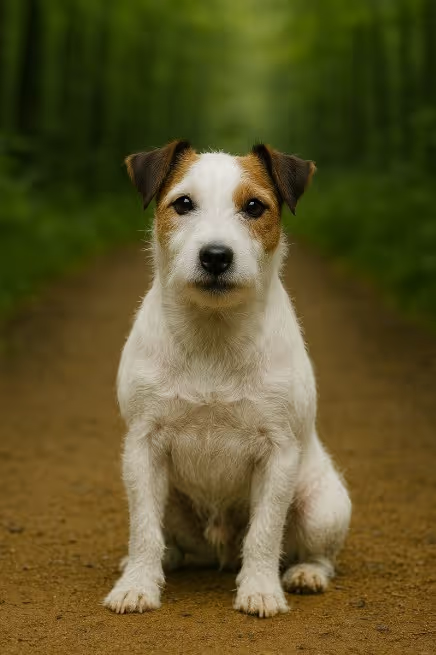The Parson Russell Terrier is a bold, quick-witted, long-legged terrier bred in 19th-century England to pursue fox to ground. Athletic, cheeky, and people-oriented, “Parsons” thrive on training games, brisk walks, and dog sports like agility and earthdog. If you’re wondering “Are Parson Russell Terriers good apartment dogs?”—yes, for active owners who provide daily exercise and enrichment. “Do Parson Russell Terriers shed?”—moderately; smooth and broken coats both shed.

Developed by Reverend John “Jack” Russell in the early 1800s in England, the Parson Russell Terrier was bred to bolt foxes for mounted hunts—fast, brave, and narrow enough to follow quarry underground. Over time, longer-legged, squarely built dogs were standardized for work above and below ground. Modern registries distinguish the Parson Russell Terrier (longer-legged, square) from the shorter-legged Russell Terrier and the broader “Jack Russell” type found in various working registries. Today, Parsons excel in performance sports and remain lively companions.
A square, athletic terrier with keen expression and springy movement.
Low to moderate upkeep; broken coats need occasional hand-stripping.
A high-drive, game little athlete that needs real outlets.
Smart, speedy, and independent—make it positive and purposeful.
Keep them lean to protect joints and maximize stamina.
Generally robust, but terrier-typical issues warrant screening.
Choose health-tested lines and clear temperament support—or consider rescue.
Are Parson Russell Terriers good apartment dogs?
With 60–90 minutes of daily exercise, enrichment, and bark training, yes.
Do Parson Russell Terriers shed?
Yes—moderate shedding. Broken coats shed less visibly when hand-stripped.
Are Parson Russell Terriers hypoallergenic?
No.
How much exercise do they need?
Plan for 60–90 minutes daily plus brain work (nose games, trick chains, agility).
Parson Russell vs Jack Russell vs Russell Terrier—what’s the difference?
Parson = longer-legged, square; Russell Terrier = shorter-legged; “Jack Russell” varies by working registry. Meet dogs and breeders to compare.
Do they bark or dig a lot?
They can—both are natural terrier outlets. Teach “quiet,” provide dig zones, and meet exercise needs.
Good with kids and other pets?
Affectionate with family; supervise with small pets due to prey drive and teach polite manners with young children.
How do I get a reliable recall?
Start on a long line, reward big, proof against wildlife gradually; integrate scent games to keep engagement high.